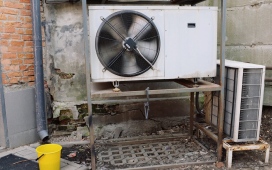Any house requires downspouts if the climate is wet and rain happens frequently. Downspout is a large pipe that connects your roof with the drainage system. The size of the downspout depends on the total footage of your roof and average intensity of rainwater in your area. You may need additional downspout to safely accommodate the rainwater. As an example for each 35 feet of the gutter, you will need one extra downspout. The downspout needs to be large enough, so it will be able to wash away leaves and small twigs. If the downspout is too small, it will be clogged easily by leaves and twigs.
A downspout is considered as functional when it is able to focus all the water to the drainage system. You shouldn’t allow water from the roof to puddle, because waterlogged soil will be destructive even to the sturdiest wall, crawlspaces, siding and foundation. Also, a damaged downspout on the roof of the second floor will cause water damage on the first floor. You shouldn’t allow the water to fall on the shingles. To prevent the water from spilling to any first floor area, the second floor downspout should be connected tightly to a pipe that goes to the first floor downspout. It is essential because your roof will collect a large amount of rainwater, which needs to be transferred safely to the drainage system. Even if there’s a good drainage system in your home, the distance between the water runoff and the wall should be at least 6 feet. If the water is directed too close to your house, the saturated soil may cause structural and catastrophic damage. You can do this by using the downspout extension. It needs to be extended properly away from your house. Obviously, the extension should be sturdy enough that it won’t be damaged by the lawnmower. You may need to install metal guards around the extension so any collision will be avoided quite easily.
It is likely that you use hidden drains to channel the rainwater, so your lawn and backyard looks better. However, it is also likely that these hidden drains are easily get clogged and you will know about it when it’s already too later. As an alternative, you can use splashblock, which slows down water that flows down from the downspout. It should prevent the soil erosion, by dispersing the water to all sides of the splashblock. The splashblok will create an area devoid of any vegetation, so you don’t need to trim them using the lawnmower. This protects the downspout from getting damaged by the lawnmower.
You can also use a splashblock under the faucet that’s inclined slightly away from your house wall. Leaking faucet could saturate the soil near your house, making slow and permanent damage. Problem will become worse when the saturated soil is frozen solid during winter, because it will expand and push against the foundation and the underground wall of your basement.






